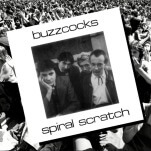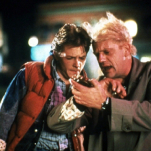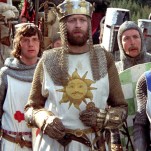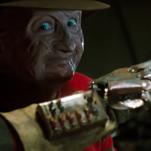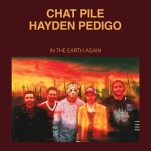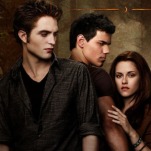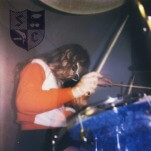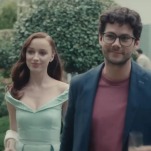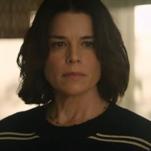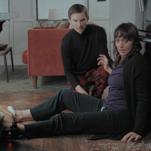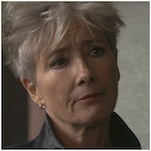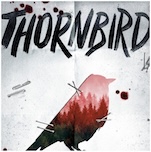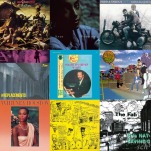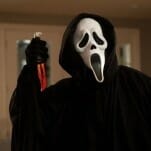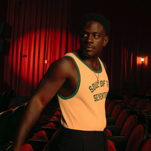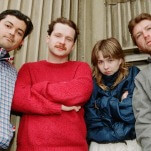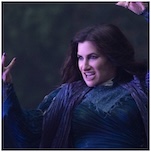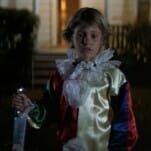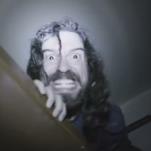The 25 Best Free Movies on YouTube Right Now

YouTube has as deep a selection of new movies as anyone, as long as you’re willing to pay to stream. But the video streaming service also has a great, if hard-to-find, selection of legal free movies. Really! And we’re not talking weirdly uploaded, grainy, sketchy films. Real deal, 100% free (and good) movies are out there alongside viral stars and adorable animal montages.
This treasure trove includes a wide range of classics that are free because they’ve entered the public domain, along with a selection of hidden gems among YouTube’s official selection of free movies (you have to really dig to find them among a lot of straight-to-DVD titles and knock-offs).
You can also check out our guides to the best movies on Netflix, Amazon Prime, Max, Hulu, On Demand, at Redbox and in theaters. Or visit all our Paste Movie Guides.
Here are the 25 Best Free Movies on YouTube:
1. Monty Python and the Holy Grail
Year: 1975
Director: Terry Gilliam, Terry Jones
Stars: Graham Chapman, Eric Idle, Michael Palin, John Cleese, Terry Gilliam, Terry Jones
Rating: PG
It sucks that some of the shine has been taken off Holy Grail by its own overwhelming ubiquity. Nowadays, when we hear a “flesh wound,” a “ni!” or a “huge tracts of land,” our first thoughts are often of having full scenes repeated to us by clueless, obsessive nerds. Or, in my case, of repeating full scenes to people as a clueless, obsessive nerd. But, if you try and distance yourself from the over-saturation factor, and revisit the film after a few years, you’ll find new jokes that feel as fresh and hysterical as the ones we all know. Holy Grail is, indeed, the most densely packed comedy in the Python canon. There are so many jokes in this movie, and it’s surprising how easily we forget that, considering its reputation. If you’re truly and irreversibly burnt out from this movie, watch it again with commentary, and discover the second level of appreciation that comes from the inventiveness with which it was made. It certainly doesn’t look like a $400,000 movie, and it’s delightful to discover which of the gags (like the coconut halves) were born from a need for low-budget workarounds. The first-time co-direction from onscreen performer Terry Jones (who only sporadically directed after Python broke up) and lone American Terry Gilliam (who prolifically bent Python’s cinematic style into his own unique brand of nightmarish fantasy) moves with a surreal efficiency. —Graham Techler
2. The Truman Show
Year: 1998
Director: Peter Weir
Stars: Jim Carrey, Laura Linney, Ed Harris
Rating: PG
Peter Weir’s delightful, hilarious The Truman Show wouldn’t get made anymore. It’s a star-studded event film centered around a simple and dystopian premise: Jim Carrey’s eponymous character has unwittingly been raised from birth as a reality TV star and only now has begun to suspect that everybody in his life is a hired actor. Carrey’s clear-eyed acting is worlds away from the zany roles that catapulted him to fame a few short years prior, though, as was typically the case with Carrey roles in the ’90s, copious amounts of special effects work go toward creating a believable simulated reality for Carrey’s endearing everyman to be trapped within. The heartfelt monologues and devastating revelations as he fights to escape his gilded cage shine all the brighter for it. The fight to break away from control, from a sanitized and curated existence dictated by a literal white father figure in the sky, rings alarmingly two decades years later, when social media has made performative brand managers of us all. Truman is an unlikely and often hapless hero in his own story, but his eventual hijacking of his own narrative—and his final defiance of his literal and figurative creator figure—form one of the most heroic cinematic arcs of the last 20 years. —Kenneth Lowe
3. The Martian
Year: 2015
Director: Ridley Scott
Stars: Matt Damon, Jessica Chastain, Kristen Wiig, Jeff Daniels, Michael Peña, Sean Bean, Kate Mara, Sebastian Stan
Rating: R
Ridley Scott’s The Martian is largely a cold, deliberate film, but there’s still something undeniably stirring about it. Instead of showering us with treacle, the film pays tribute to simple human attributes such as smarts, teamwork, sacrifice and determination, going about its business much like its resourceful characters do. And yet, the film’s underlying message is nonetheless inspiring: We can do great things if only we put our minds to it. Based on Andy Weir’s 2011 novel, The Martian is set in a not-too-distant future in which U.S. astronauts are conducting manned missions to the Red Planet. The latest expedition finds a crew that includes Commander Melissa Lewis (Jessica Chastain) and botanist Mark Watney (Matt Damon) getting ready to return home to Earth when a deadly storm suddenly bears down on them. In the rush to return to their ship, Watney is hit by debris and presumed dead, Lewis reluctantly taking the rest of her crew into space. Except, of course, Watney hasn’t really died. As you might imagine, much depends on the film’s outcome, and Scott finds a way, even in the story’s final moments, to undercut the obviously emotional stakes with a calm precision that makes it all the more thrilling and harrowing. Consequently, The Martian is subtly heroic, peeling away the potential histrionics of the stranded-on-Mars plot to look at the very human men or women who ensure that the spaceships can fly in the first place.—Tim Grierson
4. Steamboat Bill, Jr.
Year: 1928
Director: Buster Keaton and Charles Reisner
Stars: Buster Keaton, Ernest Torrence, Marion Byron
Rating: NR
Steamboat Bill, Jr.’s climactic cyclone sequence—which is at once great action and great comedy—would on its own earn the film a revered place in the canon of great all time silent film. The iconic shot of a house’s facade falling on Keaton is only one of many great moments in the free-flowing, hard-blowing sequence. But Steamboat Bill, Jr. also showcases some of Keaton’s marvelous intimacy as an actor, such as a scene in which his father tries to find him a more manly hat, or during a painfully hilarious attempt to pantomime a jailbreak plan. —Jeremy Mathews
5. The Fifth Element
Year: 1997
Director: Luc Besson
Stars: Bruce Willis, Gary Oldman, Ian Holm, Chris Tucker, Milla Jovovich
Rating: PG-13
In an early scene from Luc Besson’s The Fifth Element, there’s a subtle but very telling exchange between the film’s two protagonists. Cab driver Korben Dallas (Bruce Willis) has his daily routine interrupted when Leeloo (an early starring role for Milla Jovovich) crashes through his roof. She speaks an ancient language, so the two can’t communicate—until she says the word “boom,” that is. “I understand ‘boom’,” Korben replies. Right away, we’re cued to the limits of Korben’s worldview, mostly restricted to macho action. This is also the first hint we get that this is a self-reflexive role for Willis, breaking down his tough-guy star persona and digging deep into what exactly makes him such a reliable “guy-movie” centerpiece. For all his typical manly heroism, Korben is a misfit in the film’s flamboyant space operatic future. He’s an alpha-male, tailor-made for the ’80s or ’90s, but, after finishing his time in the military, he’s adrift. The 23rd century doesn’t quite have room for him: He lives alone following a failed marriage, has trouble holding onto his job (and his driver’s license), can’t quit smoking and doesn’t have any friends outside of his old platoon. When the mysterious Leeloo literally lands into Korben’s life, he automatically takes on the role of protector. Leeloo is, it turns out, is a supreme being, sent to Earth to protect humanity from an ancient force that threatens the planet every 5,000 years. There’s a contradiction at the heart of The Fifth Element, with Korben’s manly heroism at odds with his social ineptitude. The film doesn’t try to reconcile these, but rather lets Korben find his own path. He learns to work with others and embrace his more sensitive side, even as he’s cracking wise and kicking ass. In the end, it’s Leeloo who has the power to save Earth from an apocalyptic alien attack. She’s the supreme being sent to Earth for that purpose. But she still needs Korben, and at the last minute, he figures out his role. It’s hard to know how intentional any of this was, since Besson still gives us a stoic tough-guy who saves the day. But with
6. The Revenant
Year: 2015
Director: Alejandro Gonzalez Inarritu
Stars: Leonardo DiCaprio, Tom Hardy, Domhnall Gleeson, Will Poulter
Rating: R
Savage, pummeling, an endurance test, and the most visually striking movie you’ll see all year, Alejandro Gonzalez Inarritu’s The Revenant is a dark ride through the depths of humanity and a father’s search for justice. Leonardo DiCaprio, in a wild, physical performance, plays frontier trapper Hugh Glass, who, mauled by a bear and left for dead, survives to embark on an epic quest for revenge against the man who left him for dead and murdered his son. Another mesmerizingly gorgeous collaboration between Inarritu and celebrated cinematographer Emmanuel Lubezki, the ruthless story is so naturally artistic that it’s easy to lose sight of the technical mastery involved, but the result is a brutal, edge-of-the-world Apocalypse Now. —Brent McKnight
7. The Natural
Year: 1984
Director: Barry Levinson
Stars: Robert Redford, Glenn Close, Robert Duvall
Rating: PG
Baseball has inspired more movies than any other sport, but the greatest of them all is The Natural. Roy Hobbs (Robert Redford) is a promising, young prospect with a bright career ahead of him in the 1930s when a troubled femme fatale guns him down at age 19. Sixteen years after the fact, he isn’t ready to let go of his love of the game, getting signed to a fictional scrub team called the New York Knights. It’s more than a story about baseball; it’s about a middle-aged man living his dream despite the naysayers. It’s a tale about a guy distracted by the glitzy glamorous babes all famous people gravitate towards, only to discover a happier life with his high-school sweetheart (Glenn Close). But when Hobbs hits the big two home runs—the one that breaks the clock, and the showstopper at the end that kills the lights, literally—and Randy Newman’s beautiful score triumphantly takes over, you know this is the ultimate take on the summer classic.—Joe Shearer
8. Hundreds of Beavers
Year: 2024
Director: Mike Cheslik
Stars: Ryland Brickson Cole Tews, Olivia Graves, Wes Tank
Rating: NR
Hundreds of Beavers is a lost continent of comedy, rediscovered after decades spent adrift. Rather than tweaking an exhausted trend, the feature debut of writer/director Mike Cheslik is an immaculately silly collision of timeless cinematic hilarity, unearthed and blended together into something entirely new. A multimedia extravaganza of frozen idiocy, Hundreds of Beavers is a slapstick tour de force—and its roster of ridiculous mascot-suited wildlife is only the tip of the iceberg. First things first: Yes, there are hundreds of beavers. Dozens of wolves. Various little rabbits, skunks, raccoons, frogs and fish. (And by “little,” I mean “six-foot stuntmen in cheap costumes.”) We have a grumpy shopkeeper, forever missing his spittoon. His impish daughter, a flirty furrier stuck behind his strict rage. And one impromptu trapper, Jean Kayak (co-writer/star Ryland Brickson Cole Tews), newly thawed and alone in the old-timey tundra. Sorry, Jean, but you’re more likely to get pelted than to get pelts. With its cartoonish violence and simple set-up comes an invigorating elegance that invites you deeper into its inspired absurdity. And Hundreds of Beavers has no lack of inspiration. The dialogue-free, black-and-white comedy is assembled from parts as disparate as The Legend of Zelda, Charlie Chaplin’s The Gold Rush, JibJabs, Terry Gilliam animation, Guy Maddin and Jackass. Acme is namechecked amid Méliès-like stop tricks and Muppety puppetry, while its aesthetic veers from painting broad violence upon a sparse snowy canvas to running through the shadowy bowels of an elaborate German Expressionist fortress. Guiding us through is Tews. He’s a wide-eyed mime with a caricatured lumberjack body, expertly gauging his expressions and sacrificing his flesh for the cause. His performance takes a little from the heavy-hitters of the form: The savvy romanticism of Harold Lloyd, the physical contortions of Buster Keaton, the underdog struggles of Charlie Chaplin, and the total bodily commitment of all three. You don’t get great physical comedy accidentally. Just as its intrepid idiot hero forges bravely on despite weathering frequent blows to the head, impaled extremities and woodland beatings, Hundreds of Beavers marches proudly towards the sublime transcendence of juvenilia. In its dedication to its own premise, Hundreds of Beavers reaches the kind of purity of purpose usually only found in middle-school stick-figure comics or ancient Flash animations—in stupid ideas taken seriously. One of the best comedies in the last few years, Hundreds of Beavers might actually contain more laughs than beavers. By recognizing and reclaiming the methods used during the early days of movies, Mike Cheslik’s outrageous escalation of the classic hunter-hunted dynamic becomes a miraculous DIY celebration of enduring, universal truths about how we make each other laugh.–Jacob Oller
9. Scream
Year: 1996
Director: Wes Craven
Stars: David Arquette, Neve Campbell, Courteney Cox, Matthew Lillard, Rose McGowan, Skeet Ulrich, Drew Barrymore
Rating: R
Before Scary Movie or A Haunted House were even ill-conceived ideas, Wes Craven was crafting some of the best horror satire out there. And although part of Scream’s charm was its sly, fair jabs at the genre, that didn’t keep the director from dreaming up some of the most brutal knife-on-human scenes in the ’90s–a decade where many thought the slasher genre had faded away, never to be seen again. With the birth of the “Ghost Face” killer, Craven took audiences on a journey through horror-flick fandom, making all-too-common tricks of the trade a staple for survival: sex equals death, don’t drink or do drugs, never say “I’ll be right back.” With a crossover cast of Neve Campbell (as ultimate final girl Sidney Prescott), Courteney Cox, David Arquette, Matthew Lillard, Rose McGowan and Drew Barrymore (okay, for like 10 minutes), Scream arrived with a smart, funny take on a tired genre. It wasn’t the first film of its kind, but it was the first one to be seen by a huge audience, which went a long way in raising the “genre IQ” of the average horror fan. —Tyler Kane
10. Fear and Desire
Year: 1953
Director: Stanley Kubrick
A 24-year-old Stanley Kubrick’s feature debut, which he later described as “a bumbling amateur film exercise,” Fear and Desire proves the filmmaker a clear-eyed judge of his own work. That’s not to say there’s nothing to like in the hour-long war film, a meandering and tepid critique of the ahem “police action” in Korea, but that those things to like are immature interests engaged with by a filmmaker still learning the craft. The purple prose of future Pulitzer-winner Howard Sackler fills both dialogue and voiceover with strained metaphors and abstract intellectualizing, and the actors, by and large, respond to the overwritten material by overacting it. Frank Silvera, who would appear in Kubrick’s much better follow-up Killer’s Kiss, finds the most humanity in the quartet of soldiers crash-landed behind enemy lines by going grimier and gruffer than the rest. His no-frills blue collar approach—contrasted against the simpering mania of Paul Mazursky (the Bob & Carol & Ted & Alice filmmaker making his acting debut here) and near comic-strip sincerity of Kenneth Harp—encourage us to read some of the intentional ambiguity of the film’s emotions on his face. And Kubrick’s faces are still at the forefront: A mid-movie freakout between Mazursky’s private and a local woman he’s captured is both the film’s best scene and perhaps the director’s first example of that disconcerting straight-at-the-camera look that—thanks to A Clockwork Orange, The Shining, Fear and Desire’s superior foil, Full Metal Jacket, and others—has become known as the Kubrick Stare. Representative of violence and desire and how those two always seem to be neighbors in men, the look is a brief but telling stylistic choice in a scene filled with pet themes and physicalizations of these ideas. Grasping hands and spilled stew create some of the most memorable images, but that the images are what remain most memorable from the movie is itself a kind of indicator. As a film, Fear and Desire doesn’t live up to its experimental ambitions; as a “film exercise,” it’s a showcase for a director who’s got an eye and is quickly developing everything else.—Jacob Oller
11. Sherlock Jr.
Year: 1924
Director: Buster Keaton
You could make a highlight reel of classic silent comedy moments using only Buster Keaton’s Sherlock, Jr., and no one could justly complain. In the 91 years since Keaton made his love letter to cinema, no one has crafted a better examination of the relationship between the audience and the silver screen. Keaton plays a movie theater projectionist and wannabe detective who dreams he walks into a movie screen and becomes a suave hero—the perfect metaphor for the appeal of the movies. Keaton plays with reality through virtuoso special effects, but also captures genuine stunts in single takes. (He broke his neck in one scene and still finished the take.) He daringly subverts structure—the conflict is resolved halfway through the movie with no help from the hero. He brings visual poetry to slapstick with rhyming gags. The laughs coming from failure in the real world and serendipity in the fantasy movie world, but the mechanics parallel each other. And he strings it all into a romp that never stops moving toward more hilarity.—Jeremy Mathews
12. Nosferatu
Year: 1929
Director: F. W. Murnau
Stars: Max Schreck, Alexander Granach, Gustav von Wangenheim
F.W. Murnau’s sublimely peculiar riff on Dracula has been a fixture of the genre for so long that to justify its place on this list seems like a waste of time. Magnificent in its freakish, dour mood and visual eccentricities, the movie invented much of modern vampire lore as we know it. It’s once-a-year required viewing of the most rewarding kind. —Sean Gandert
13. Sleepy Hollow
Year: 1999
Director: Tim Burton
Stars: Johnny Depp, Christina Ricci, Miranda Richardson, Michael Gambon, Jeffrey Jones, Casper Van Dien, Christopher Walken
Rating: R
Visually, there’s no denying that Sleepy Hollow is among Tim Burton’s most sumptuous films. A modern retelling of the story of Ichabod Crane makes Johnny Depp’s character an eccentric police inspector rather than a nebbish school teacher, although he does retain plenty of the typical Depp mix of awkwardness, vulnerability and smoldering sensuality. The story almost plays like a Burton film crossed with something by say, Wes Craven if it’s Craven in one of his more populist, money-making moods–a Georgian-era supernatural slasher film with a touch of American giallo as Crane tries to work out not the identity of the killer (the headless horseman) but who is controlling the killer. It all builds to a big finale that feels a little out of place and overwrought, a seeming overture toward making a financially successful film that doesn’t feel entirely necessary. Sleepy Hollow is at its best in its quieter moments, living off the strength of Depp and its creepy art direction, rather than when resorting to fight and chase scenes. But the gothic visuals definitely do carry it quite a ways. —Jim Vorel
14. Black Christmas
Year: 1974
Director: Bob Clark
Stars: Olivia Hussey, Margot Kidder, Keir Dullea, Andrea Martin, John Saxon
Rating: R
Fun fact—nine years before he directed holiday classic A Christmas Story, Bob Clark created the first true, unassailable “slasher movie” in Black Christmas. Yes, the same person who gave TBS its annual Christmas Eve marathon fodder was also responsible for the first major cinematic application of the phrase “The calls are coming from inside the house!” Black Christmas, which was insipidly remade in 2006, predates John Carpenter’s Halloween by four years and features many of the same elements, especially visually. Like Halloween, it lingers heavily on POV shots from the killer’s eyes as he prowls through a dimly lit sorority house and spies on his future victims. As the mentally deranged killer calls the house and engages in obscene phone calls with the female residents, one can’t help but also be reminded of the scene in Carpenter’s film where Laurie (Jamie Lee Curtis) calls her friend Lynda, only to hear her strangled with the telephone cord. Black Christmas is also instrumental, and practically archetypal, in solidifying the slasher legend of the so-called “final girl.” Jessica Bradford (Olivia Hussey) is actually among the better-realized of these final girls in the history of the genre, a remarkably strong and resourceful young woman who can take care of herself in both her relationships and deadly scenarios. It’s questionable how many subsequent slashers have been able to create protagonists who are such a believable combination of capable and realistic. —Jim Vorel
15. Army of Darkness
Year: 1992
Director: Sam Raimi
Stars: Bruce Campbell, Embeth Davidtz, Ian Abercrombie
Rating: R
The original Evil Dead trilogy embarks on quite a steady progression from unrelenting horror to flat-out comedy, mirroring perhaps the country’s sentiment toward a genre as a whole. When Sam Raimi dropped the original The Evil Dead in 1981, audiences were unprepared for the sheer bloodiness and brutality of it, but after an entire decade of the golden age of slasher cinema, it’s safe to say that audiences became fully desensitized to many forms of horror silliness. Raimi wisely leaned into the camp to evolve with the times, meaning that by the time we reached Army of Darkness in 1992, he’s given up on trying to legitimately frighten the audience–instead, he provides an all-out laugh riot that harnesses the off the charts charisma of star Bruce Campbell like no other film before or since. Ash would already have been a cinematic icon based on Evil Dead II, but Army of Darkness takes his caddish magnetism to an entirely different level. He is the ultimately buffoon hero here, thrust into the medieval past where he must lead a languishing kingdom against the titular army of Deadites. It’s a triumph of macabre slapstick, one of the best horror comedies of all time. —Jim Vorel
16. Bernie
Year: 2011
Director: Richard Linklater
Stars: Jack Black, Matthew McConaughey, Shirley MacLaine
Bernie is as much about the town of Carthage, Texas, as it is about its infamous resident Bernie Tiede (Jack Black), the town’s mortician and prime suspect in the murder of one of its most despised citizens, Marjorie Nugent (Shirley MacLaine). Unlike Nugent, Bernie is conspicuously loved by all. When he’s not helping direct the high school musical, he’s teaching Sunday school. Like a well-played mystery, Linklater’s excellent, darkly humorous (and true) story is interspersed with tantalizing interviews of the community’s residents. Linklater uses real East Texas folks to play the parts, a device that serves as the perfect balance against the drama that leads up to Bernie’s fatal encounter with the rich bitch of a widow. The comedy is sharp, with some of the film’s best lines coming from those townsfolk. —Tim Basham
17. Pumping Iron
Year: 1977
Director: Robert Fiore, George Butler
Rating: PG
Behold arrogance anthropomorphized: A 28-year-old Arnold Schwarzenegger, competing for his sixth Mr. Olympia title, effortlessly waxes poetic about his overall excellence, his litanies regarding the similarities between orgasming and lifting weights merely fodder between bouts of pumping the titular iron and/or flirting with women he can roll up into his biceps like little flesh burritos. He is both the epitome of the human form and almost tragically inhuman, so corporeally perfect that his physique seems unattainable, his status as a weightlifting wunderkind one of a kind. And yet, in the other corner, a young, nervous Lou Ferrigno primes his equally large body to usurp Arnold’s title, but without the magnanimous bluster and dick-wagging swagger the soon-to-be Hollywood icon makes no attempt to hide. Schwarzenegger understands that weightlifting is a mind game (like in any sport), buttressed best by a healthy sense of vanity and privilege, and directors Fiore and Butler mine Arnold’s past enough to divine where he inherited such self-absorption. Contrast this attitude against Ferrigno’s almost morbid shyness, and Pumping Iron becomes a fascinating glimpse at the kind of sociopathy required of living gods. —Dom Sinacola
18. The Kid
Year: 1921
Director: Charlie Chaplin
Stars: Charlie Chaplin, Jackie Coogan, Edna Purviance
Charlie Chaplin’s first full-length film and one of his finest achievements, The Kid tells the story of an abandoned child and the life he builds with The Little Tramp. Chaplin went against heavy studio opposition to create a more serious film in contrast to his earlier work. However, The Kid features just as much slapstick humor as his previous shorts, but placed within a broader, more dramatic context. —Wyndham Wyeth
19. Night of the Living Dead
Year: 1968
Director: George A. Romero
Stars: Judith O’Dea, Russell Streiner, Duane Jones
Rating: R
It’s not really necessary to delve into how influential George Romero’s first zombie film has been to the genre and horror itself—it’s one of the most important horror movies ever made, and one of the most important independent films as well. The question is more accurately, “how does it hold up today?”, and the answer is “okay.” Unlike, say Dawn of the Dead (not on Shudder), Night is pretty placid most of the time. The story conventions are classic and the black-and-white cinematography still looks excellent, but some of the performances are downright irritating, particularly that of Judith O’Dea as Barbara. Duane Jones more than makes up for that as the heroic Ben, however, in a story that is very self-sufficient and provincial—just one small group of people in a house, with no real thought to the wider world. It’s a horror film that is a MUST SEE for every student of the genre, which is easy, considering that the film actually remains in the public domain. But in terms of entertainment value, Romero would perfect the genre in his next few efforts. Also recommended: The 1990 remake of this film by Tom Savini, which is unfairly derided just for being faithful to its source. —Jim Vorel
20. Mean Girls
Year: 2004
Director: Mark Waters
Stars: Lindsay Lohan, Rachel McAdams, Tim Meadows, Ana Gasteyer, Amy Poehler, Tina Fey
Rating: PG-13
Before Tina Fey got stubborn—before sometimes thoughtful critiques of her occasionally limited perspective encouraged the reactionary, heel-in-ground attitude about the politics of identity and changing social norms—she was one of the most thoughtful writers and creators to engage with both of those subject matters, and how we talk about them. A crucial part of what made 30 Rock one of the smartest sitcoms in history was its investigation of what we talk about when we talk about identity politics. A lot of that sharpness has its origins in Fey’s 2004 screenplay debut, Mean Girls, a dark comedy in the vein of Heathers and Clueless, scrutinizing the social dynamics of high school and, in particular, how young women treat one another and themselves. Through the eyes of new kid, formerly homeschooled Cady Harron (Lindsay Lohan), the film submerges the audience in the nasty politics of “girl world” as she tries to make friends, schemes against the popular girls, and loses sight of herself in the process. Adapted from Rosalind Wiseman’s nonfiction book Queen Bees and Wannabes: Helping Your Daughter Survive Cliques, Gossip, Boyfriends, and Other Realities of Adolescence, Mean Girls has its own unique edge apart from 30 Rock, not just as a high school movie, but as a movie that dives into the operations of hierarchical systems. And for Fey, language is the key to unlocking how these high school cliques work. Fey’s lauded for her film’s memorable lines (quotes like “stop trying to make fetch happen” and “too gay to function” live on, at least in meme form), but Mean Girls is an impressive example of translating Rosalind Wiseman’s nonfiction, sociological approach into narrative and fictive application. Essentially, Mean Girls focuses on how the high schoolers codify social dynamics—how they articulate where they or other people fall taxonomically—via class, gender and race. As time passes, Mean Girls’ imitators seem flaccid by comparison. The film’s unpacking of the cruelty of internalized misogyny has, over the course of time, grown more acidic, its schemes and backtalking as scalding as it ever was. —Kyle Turner
21. Ghost in the Shell
Year: 1995
Director: Mamoru Oshii
It’s difficult to overstate how enormous of an influence Ghost in the Shell exerts over not only the cultural and aesthetic evolution of Japanese animation, but over the shape of science-fiction cinema as a whole in the 21st century. Adapted from Masamune Shirow’s original 1989 manga, the film is set in the mid-21st century, a world populated by cyborgs in artificial prosthetic bodies, in the fictional Japanese metropolis of Niihama. Ghost in the Shell follows the story of Major Motoko Kusanagi, the commander of a domestic special ops task-force known as Public Security Section 9, who begins to question the nature of her own humanity surrounded by a world of artificiality. When Motoko and her team are assigned to apprehend the mysterious Puppet Master, an elusive hacker thought to be one of the most dangerous criminals on the planet, they are set chasing after a series of crimes perpetrated by the Puppet Master’s unwitting pawns before the seemingly unrelated events coalesce into a pattern that circles back to one person: the Major herself. Everything about Ghost in the Shell shouts polish and depth, from the ramshackle markets and claustrophobic corridors inspired by the likeness of Kowloon Walled City, to the sound design, evident from Kenji Kawai’s sorrowful score, to the sheer concussive punch of every bullet firing across the screen. Oshii took Shirow’s source material and arguably surpassed it, transforming an already heady science-fiction action drama into a proto-Kurzweil-ian fable about the dawn of machine intelligence. Ghost in the Shell is more than a cornerstone of cyberpunk fiction, it’s a story about what it means to craft one’s self in the digital age, a time where the concept of truth feels as mercurial as the net is vast and infinite. —Toussaint Egan
22. The Last Man on Earth
Year: 1964
Directors: Ubaldo Ragona, Sidney Salkow
Stars: Vincent Price, Tony Cerevi, Franca Bettoja
Richard Matheson’s I Am Legend has proven notoriously difficult to adapt while keeping any of its ideas intact, but compared to the later Omega Man or 2007 version of I Am Legend with Will Smith, this is probably the best overall take on the story. Some have called it Vincent Price’s best film, featuring wonderfully gothic settings in Rome where the last human man on Earth wages a nightly war against the “infected,” who have taken on the characteristics of classical vampires. It doesn’t fully commit to the inversion of protagonist/antagonist of the source material, but it makes the use of Price’s magnetic screen presence and ability to monologue. No one ever watches a Vincent Price movie and thinks “I wish there was less Vincent Price in this,” and The Last Man on Earth delivers a showcase for the actor at the height of his powers. Night of the Living Dead director George Romero has stated that without The Last Man on Earth, the modern zombie would never have been conceived. —Jim Vorel
23. The Lady Vanishes
Year: 1938
Director: Alfred Hitchcock
Stars: Margaret Lockwood, Michael Redgrave, Paul Lukas
Rating: PG
Pretty much predating every trope you’ve ever come to expect out of a genre that gets its name from keeping the audience keyed-up, The Lady Vanishes is both hilariously dated and a by-the-numbers primer on how to make a near-perfect thriller. Far from Hitchcock’s first foray into suspense, the film follows a soon-to-be-married woman, Iris (Margaret Lockwood), who becomes tangled in the mysterious circumstances surrounding the titular lady’s disappearance aboard a packed train. No shot in the film is extraneous, no piece of dialogue pointless—even the ancillary characters, who serve little ostensible part besides lending complexity to Iris’s search for the truth, are crucial to building the tension necessary to making said lady’s vanishing believable. The film is a testament to how, even by 1938, Hitchcock was shaving each of his films down to their most empirical parts, ready to create some of the most vital genre pictures of the 1950s. —Dom Sinacola
24. Donnie Darko
Year: 2001
Director: Richard Kelly
Stars: Jake Gyllenhaal, Jena Malone, Mary McDonnell, Holmes Osborne, Patrick Swayze, Maggie Gyllenhaal, Daveigh Chase, James Duval, Arthur Taxier
Rating: R
Apparently, at some point in its burgeoning cult ascendency, director Richard Kelly admitted that even he didn’t totally get what’s going on in Donnie Darko—going so far as to release a “Director’s Cut” in 2005 that supposedly cleared up some of the film’s more unwieldy stuff. Yet another example of a small budget wringed of its every dime, Kelly’s debut crams love, weird science, jet engines, superhero mythology, wormholes, armchair philosophy, giant bunny rabbits and Patrick Swayze (as a child molester, no less) into a film that should be celebrated for its audacity more than its coherency. It also helps that Jake Gyllenhaal leads a stellar cast, all totally game. In Donnie Darko, the only thing that’s clear is Kelly’s attitude: that at its core cinema is the art of manifesting the unbelievable, of doing what one wants to do when one wants to do it. —Christian Becker
25. Paprika
Year: 2006
Director: Satoshi Kon
Stars: Megumi Hayashibara, Toru Furuya, Koichi Yamadera
Rating: R
In a career of impeccable films, Paprika is arguably Kon’s greatest achievement. Adapted from the 1993 novel by Yasutaka Tsutsui (whose other notable novel, The Girl Who Leapt Through Time, would form the basis of Mamoru Hosoda’s 2006 film of the same name), Kon could not have asked for source material that better suited his thematic idiosyncrasies as a director. Paprika follows the story of Atsuko Chiba, a psychiatrist working on revolutionary psychotherapy treatment involving the DC Mini, a device that allows the user to record and navigate one’s dreams in a shared simulation. By day Atsuko maintains an unremittingly cold exterior, but by night she moonlights as the film’s titular protagonist: a vivacious dream detective who consults clients on her own terms. When a pair of DC Minis are stolen and loosed upon the world, causing a stream of havoc which manifests the collective unconscious into the waking world, it’s up to Paprika and her colleagues to save the day. The summation of Kon’s decade-long career as a director, Paprika is a cinematic trompe l’oeil of psychedelic colors and exquisite animation. Kon’s transition cuts are memorable and mind bending, the allusions to his immense palate of cinematic influences are savvy, and his appeal to the multiplicity of the human experience as thoughtful and poignant as ever. Unfortunately, Paprika would turn out to be Kon’s last film, as he would later tragically pass away in 2010 from pancreatic cancer. One fact remains evident when looking back on the sum total of his life’s work: Satoshi Kon was, and remains, one of the greatest anime directors of his time. He will be sorely missed.–Toussaint Egan
